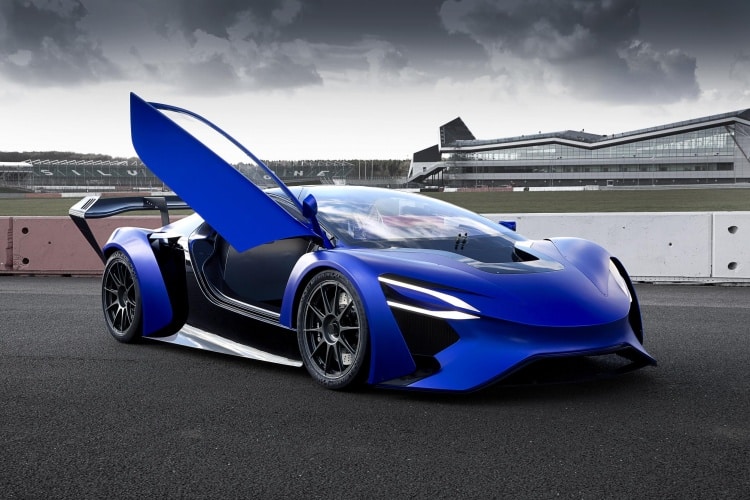Designed by Beijing automotive R&D firm TechRules, the so-called Turbine-Recharging Electric Vehicle (TREV) system is claimed to be 50 per cent more efficient than existing range extenders.
The technology is being demonstrated at the 2016 Geneva motorshow on board a concept two-seater all-wheel drive concept supercar. The turbine generator is carried behind the passenger cabin and in front of the rear wheels, making the concept a ‘mid-engined’ electric vehicle. The firm has announced plans to introduce a supercar powered by the technology within the next few years.

Powered by aviation fuel, the system’s micro turbine is used to drive a generator, which charges a battery that provides electricity to drive the traction motors.
During operation air drawn into the micro turbine is passed through a heat exchanger where heat from the exhaust air is transferred to the cold intake air after it has been compressed.
Ignition of the compressed and heated fuel-air mixture generates energy which is channeled at high speeds to turn the turbine vanes. As this hot exhaust gas is expelled, it passes through the heat exchanger to ensure the heat energy is recuperated and transferred to cold intake air.
Techrules Chief Technology Officer Matthew Jin claimed that the system differs from previous turbine-based automotive powertrains because the turbine is used exclusively to convert chemical energy into electrical energy.
“Turbines have always been a very inefficient way to convert chemical energy into useful wheel turning mechanical energy,” he said, “but, with electric vehicles, an electric motor is used to drive the wheels, which effectively frees the combustion engine to exclusively convert chemical energy into mechanical energy and finally into electric energy.” He added that micro turbines are significantly more efficient than piston engines in range extender applications, because less energy is sacrificed in frictional losses.
Other key technical innovations are said to include the use of magnetic air bearing technology instead of traditional oil lubricants, a new thermally efficient heat exchanger design and a smart battery management system that gets around the problem of cells charging at different rates and enables the batteries to be charged more quickly.
The firm began testing a prototype vehicle based on the technology at Silverstone in February 2016. It claims that a vehicle powered by the technology will produce peak power of 768 kW (1,030 bhp / 1,044 PS), be capable of 0-100 km/h in 2.5 seconds, have a top speed of 350 km/h and have a range of over 2,000 km.




Collaboration to address viable solutions for VAWG database
<blockquote>address the lack of standardisation, coordination, and collaboration of gender disaggregated data intelligence across various regions,...